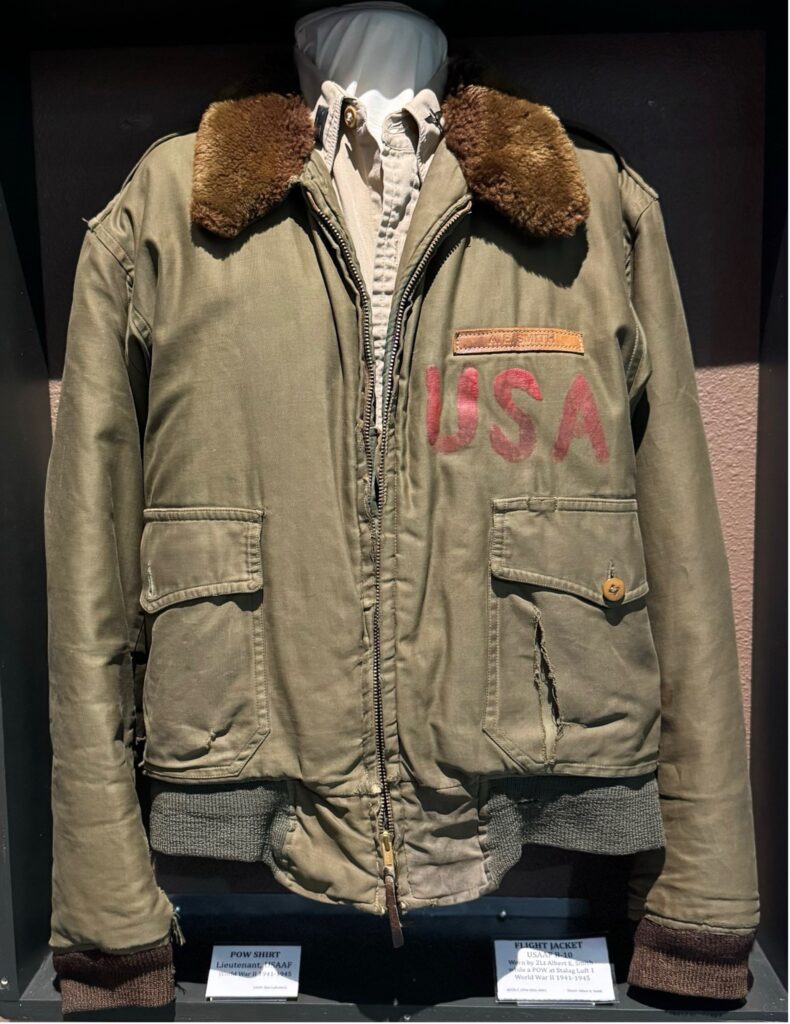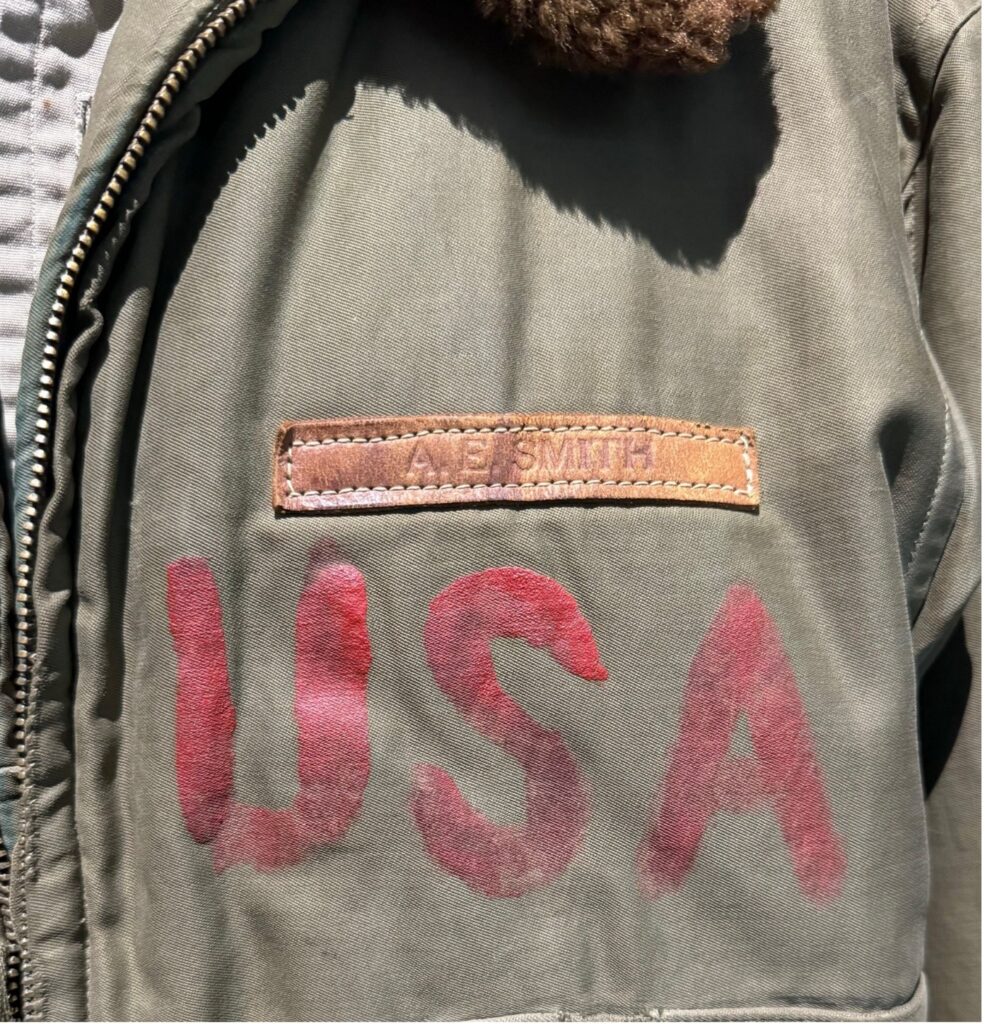Developed in 1943 as a replacement for the more expensive leather A-2 and the B series sheepskin lined flight jackets, the cloth B-10 became standard issue for all flight crews in 1944. Lacking the dashing reputation of the leather A-2, the olive drab B-10 was never as popular as its predecessor though it was decidedly more comfortable and, with its alpaca lining, warmer in the unheated cockpits of World War II aircraft.
The property of 2Lt Albert “Ed” Smith of the 20th Bomb Squadron, the museum’s B-10 has an incredible story.
On August 29, 1944, B-17 Flying Fortresses from the 15th Air Force, 2nd Bomb Group, 20th Bomb Squadron departed Amendola Air Base in Foggia, Italy to attack the German controlled Privoser Oil Refinery and rail yards in Morava Ostrava, Czechoslovakia.
Tucked into the nose of B-17G 44-6359, veteran Navigator Ed Smith set off on his 31st combat mission wearing his newly issued B-10 flight jacket. When fighter escorts failed to appear the 2nd Bomb Group formation, with the 20th in the fourth and most vulnerable position, pushed on. At 1041 enemy fighters Messerschmitt 109s and Focke Wulf 190s, nearly one hundred strong, smashed into the bombers. In 19 minutes of intense action nine B-17s and one unfortunate B-24 who had joined the formation for protection, including all seven of the 20th Bomb Squadron, were shot down before reaching the target.
Hit hard by enemy fighters B-17 44-6359’s fuselage was riddled by 20mm cannon shells, uncontrollable fires raged in the radio compartment and the #3 engine. With the intercom and oxygen system shot out, pilot 1Lt William C. Bullock Jr. signaled for the crew to bail out. After struggling to attach his parachute 2Lt Smith dove out of the aircraft’s forward hatch tumbling thousands of feet before opening his chute. Landing in a grove of trees Smith evaded capture for eight days moving south over fifty miles before German troops took him prisoner. Of 44-6359’s crew three were killed in the air battle, six were taken prisoner and spent the remainder of the war in German Prisoner of War camps, one successfully evaded capture joining with Czech partisans before being returned to Allied lines.
2Lt Smith spent nine months in Stalag Luft 1 during which time he wore this tattered B-10 flight jacket marked USA in bright red paint by his captors.


